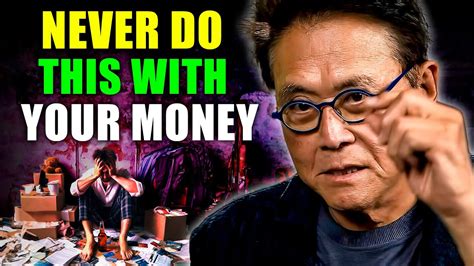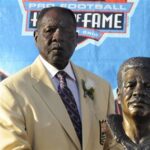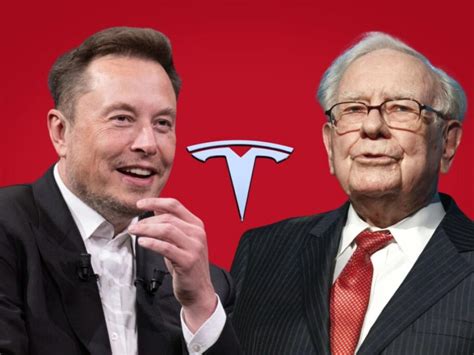
Robert Kiyosaki, author of “Rich Dad Poor Dad,” advises individuals to circumvent what he terms the “two money laws” that perpetuate poverty: “work hard” and “your house is an asset.” He argues that adhering to these conventional financial principles can trap individuals in a cycle of financial struggle, advocating instead for financial literacy and investment in income-generating assets.
Robert Kiyosaki, the renowned author of the personal finance classic “Rich Dad Poor Dad,” has issued a stark warning about what he considers the “two money laws” that contribute to financial hardship for many. In a recent statement, Kiyosaki asserts that blindly following the advice to “work hard” and believing that “your house is an asset” can be detrimental to building wealth and escaping poverty. He advocates for a shift in mindset, emphasizing the importance of financial education and strategic investment in income-producing assets.
Kiyosaki contends that the conventional wisdom surrounding money often leads individuals down a path of financial servitude. He argues that simply working hard without acquiring financial literacy is insufficient for achieving financial freedom. “Most poor people have been educated, go to school, work hard,” Kiyosaki stated, highlighting the disconnect between traditional education and financial success. He suggests that the focus on earning a high salary often overshadows the crucial need to understand how money works and how to make it work for you.
Furthermore, Kiyosaki challenges the widely held belief that a house is an asset. While a home provides shelter and can appreciate in value over time, he argues that it is primarily a liability due to the ongoing expenses associated with homeownership, such as mortgage payments, property taxes, insurance, and maintenance. He emphasizes the importance of distinguishing between assets, which generate income, and liabilities, which consume income.
Kiyosaki’s perspective is rooted in his own experiences and the lessons he learned from his “rich dad,” a mentor who taught him the principles of financial independence. In “Rich Dad Poor Dad,” Kiyosaki contrasts the financial advice he received from his biological father, whom he refers to as his “poor dad,” with the guidance of his friend’s father, his “rich dad.” His “poor dad,” a highly educated government employee, adhered to the traditional path of working hard, saving money, and investing in a home. In contrast, his “rich dad,” a successful entrepreneur, emphasized the importance of financial literacy, investing in assets, and building businesses.
According to Kiyosaki, the key to escaping poverty lies in acquiring financial intelligence, which involves understanding accounting, investing, markets, and the law. He encourages individuals to educate themselves about financial matters, seek out mentors, and take calculated risks in order to build wealth. He advocates for investing in assets such as stocks, bonds, real estate, and businesses that generate passive income, allowing individuals to break free from the cycle of trading time for money.
Kiyosaki’s views have resonated with millions of people around the world, challenging conventional financial wisdom and inspiring individuals to take control of their financial futures. However, his advice has also faced criticism from some financial experts, who argue that it oversimplifies complex financial issues and may not be suitable for everyone. Critics point out that investing in assets involves risk and that not everyone has the resources or expertise to succeed as an entrepreneur or investor.
Despite the criticism, Kiyosaki’s message remains powerful and relevant, particularly in an era of economic uncertainty and increasing financial inequality. His emphasis on financial literacy and strategic investment provides a framework for individuals to navigate the complexities of the modern financial landscape and build a more secure financial future. By challenging conventional wisdom and encouraging individuals to think differently about money, Kiyosaki has sparked a global conversation about financial empowerment and the pursuit of financial freedom.
Deeper Dive into Kiyosaki’s “Two Money Laws”
Kiyosaki’s criticism of the advice to “work hard” and the assertion that “your house is an asset” goes deeper than a simple rejection of common financial sayings. He argues these concepts, while seemingly straightforward, are often misunderstood and can actively hinder wealth accumulation, especially without a broader understanding of financial principles.
- “Work Hard”: The Labor Trap
Kiyosaki doesn’t dismiss the importance of effort, but he critiques the idea that simply working harder in a traditional job is the primary key to financial success. He points out that most people are taught to go to school, get good grades, and find a secure job. This model, he argues, perpetuates a cycle where individuals trade their time for money, paying a significant portion of their earnings in taxes and expenses, leaving them with limited resources to build wealth.
The core of Kiyosaki’s argument is that relying solely on a salary limits one’s earning potential. Employees are often taxed at a higher rate than business owners, and their income is directly tied to the hours they work. This linear relationship between time and money makes it difficult to scale income and achieve financial independence. He advocates for creating or investing in systems that generate income independently of one’s direct labor, such as businesses, rental properties, or royalties.
Furthermore, Kiyosaki argues that focusing solely on earning a higher salary can lead to lifestyle inflation, where increased income is matched by increased spending, leaving individuals no closer to financial freedom. He emphasizes the importance of controlling expenses and investing the difference to build assets.
- “Your House is an Asset”: The Liability Illusion
Kiyosaki’s assertion that a house is often a liability rather than an asset is one of his most controversial points. He doesn’t deny that a house can appreciate in value or provide a sense of security. However, he defines an asset as something that puts money in your pocket, while a liability takes money out of your pocket.
From this perspective, a house is a liability because it incurs ongoing expenses such as mortgage payments, property taxes, insurance, maintenance, and repairs. These expenses reduce cash flow and limit the resources available for investing in income-generating assets.
Kiyosaki argues that many people tie up a significant portion of their wealth in their homes, leaving them with limited capital to invest in other assets. He suggests that individuals should consider whether their home is truly serving their financial goals or whether it is simply a lifestyle expense. He advocates for prioritizing investments that generate income and building a portfolio of assets that can provide financial security and independence.
He distinguishes this point by saying that one’s primary residence is often viewed through an emotional lens, rather than a financial one. He is primarily advocating for a calculated and unemotional approach to financial decisions. This doesn’t mean one should never own a home, but rather to consider the home’s true financial impact on one’s ability to generate wealth.
The Importance of Financial Literacy
The underlying theme of Kiyosaki’s message is the importance of financial literacy. He believes that a lack of financial education is a major contributing factor to poverty and financial struggles. He argues that schools typically do not teach students about money management, investing, or building wealth, leaving them ill-equipped to navigate the complexities of the financial world.
Kiyosaki emphasizes the need to understand basic financial concepts such as:
- Accounting: Understanding financial statements, such as income statements, balance sheets, and cash flow statements, is essential for tracking income and expenses, assessing financial performance, and making informed investment decisions.
- Investing: Learning about different investment options, such as stocks, bonds, real estate, and businesses, is crucial for building a diversified portfolio and generating passive income.
- Markets: Understanding how markets work, including the factors that influence prices and the risks involved in different investment strategies, is essential for making informed investment decisions.
- The Law: Understanding tax laws, business regulations, and other legal aspects of finance is crucial for protecting assets and minimizing tax liabilities.
Kiyosaki encourages individuals to take responsibility for their own financial education by reading books, attending seminars, seeking out mentors, and practicing their financial skills. He believes that anyone can become financially literate with dedication and effort.
Building a Portfolio of Assets
Kiyosaki advocates for building a portfolio of assets that generate passive income. Passive income is income that is earned without actively working for it, such as rental income from real estate, dividends from stocks, or royalties from intellectual property.
He suggests that individuals should focus on acquiring assets that produce cash flow, allowing them to break free from the cycle of trading time for money. Some examples of assets that Kiyosaki recommends include:
- Real Estate: Investing in rental properties can generate passive income in the form of rent payments. Kiyosaki emphasizes the importance of understanding the real estate market, finding undervalued properties, and managing properties effectively.
- Stocks: Investing in dividend-paying stocks can provide a stream of passive income. Kiyosaki advises researching companies carefully and investing in those with a history of strong financial performance.
- Businesses: Starting or investing in a business can generate significant income. Kiyosaki emphasizes the importance of building a business that can operate without the owner’s constant involvement.
- Commodities: Investing in commodities such as gold, silver, and oil. He sees these as a hedge against inflation and instability in fiat currencies.
Kiyosaki emphasizes the importance of diversification, spreading investments across different asset classes to reduce risk. He also encourages individuals to reinvest their profits to accelerate the growth of their portfolio.
Entrepreneurial Mindset
Kiyosaki is a strong advocate for entrepreneurship, believing that starting a business is one of the most effective ways to build wealth and achieve financial freedom. He argues that entrepreneurs have the potential to earn unlimited income, control their own time, and create jobs for others.
He encourages individuals to develop an entrepreneurial mindset by:
- Identifying Opportunities: Looking for problems to solve and needs to fill in the market.
- Taking Calculated Risks: Being willing to step outside of their comfort zone and take risks in pursuit of their goals.
- Learning from Failure: Viewing failures as learning opportunities and using them to improve their strategies.
- Building a Team: Surrounding themselves with talented and supportive people who can help them achieve their goals.
Kiyosaki recognizes that entrepreneurship is not for everyone, but he believes that it is a viable option for those who are willing to work hard, learn from their mistakes, and persevere through challenges.
Criticisms of Kiyosaki’s Advice
While Kiyosaki’s message has resonated with many, it has also faced criticism from some financial experts. Some common criticisms include:
- Oversimplification: Critics argue that Kiyosaki oversimplifies complex financial issues and that his advice may not be suitable for everyone. They point out that investing in assets involves risk and that not everyone has the resources or expertise to succeed as an entrepreneur or investor.
- Risk Tolerance: Kiyosaki’s advice often involves taking on significant debt and investing in risky assets. Critics argue that this approach may not be appropriate for individuals with a low-risk tolerance or limited financial resources.
- Real Estate Focus: Kiyosaki’s emphasis on real estate investing has been criticized by some, who argue that it is a highly leveraged and illiquid asset class. They point out that real estate markets can be volatile and that it can be difficult to sell properties quickly in a downturn.
- Self-Promotion: Some critics accuse Kiyosaki of using his platform to promote his own products and services, such as books, seminars, and coaching programs. They argue that his advice may be biased and that he may not always have his audience’s best interests at heart.
It is important to consider these criticisms when evaluating Kiyosaki’s advice and to consult with a qualified financial advisor before making any significant financial decisions.
Conclusion
Robert Kiyosaki’s message about the “two money laws” and the importance of financial literacy has sparked a global conversation about financial empowerment. While his advice has faced criticism, it has also inspired millions of people to take control of their financial futures. By challenging conventional wisdom and encouraging individuals to think differently about money, Kiyosaki has provided a framework for navigating the complexities of the modern financial landscape and building a more secure financial future. The core of his teachings remains focused on shifting one’s mindset from being an employee to becoming an investor and business owner. He champions the pursuit of financial education and the strategic acquisition of assets that generate passive income, allowing individuals to break free from the traditional cycle of trading time for money.
Frequently Asked Questions (FAQ)
-
What are the “two money laws” that Robert Kiyosaki advises people to avoid?
- Robert Kiyosaki identifies two primary “money laws” that he believes can trap individuals in poverty: the advice to “work hard” and the belief that “your house is an asset.” He argues that relying solely on hard work without financial education and considering a home solely as an asset without accounting for its liabilities can hinder wealth accumulation.
-
Why does Kiyosaki consider “work hard” to be a potentially detrimental money law?
- Kiyosaki doesn’t dismiss the importance of hard work, but he argues that simply working harder in a traditional job without acquiring financial literacy is insufficient for achieving financial freedom. He believes that relying solely on a salary limits earning potential, and employees are often taxed at a higher rate. He advocates for creating or investing in systems that generate income independently of one’s direct labor.
-
Why does Kiyosaki argue that a house is often a liability rather than an asset?
- Kiyosaki defines an asset as something that puts money in your pocket, while a liability takes money out of your pocket. He argues that a house, while providing shelter and potentially appreciating in value, incurs ongoing expenses such as mortgage payments, property taxes, insurance, and maintenance, which reduce cash flow and limit resources for investing in income-generating assets.
-
What does Kiyosaki mean by “financial literacy,” and why does he consider it essential?
- Kiyosaki defines financial literacy as understanding basic financial concepts such as accounting, investing, markets, and the law. He believes that a lack of financial education is a major contributing factor to poverty and financial struggles, as schools typically do not teach students about money management, investing, or building wealth. He encourages individuals to take responsibility for their own financial education.
-
What types of assets does Kiyosaki recommend investing in to build wealth?
- Kiyosaki advocates for building a portfolio of assets that generate passive income. He recommends investing in real estate (rental properties), stocks (dividend-paying stocks), businesses, and commodities like gold and silver. He emphasizes the importance of diversification and reinvesting profits to accelerate portfolio growth.
-
How does Kiyosaki define the difference between an asset and a liability?
- Kiyosaki defines an asset as something that puts money into your pocket, while a liability takes money out of your pocket. This is a key distinction in his teachings and is central to understanding his perspective on wealth accumulation.
-
What is Kiyosaki’s view on traditional education versus financial education?
- Kiyosaki believes that traditional education, while important, does not adequately prepare individuals for the financial realities of the world. He advocates for supplementing traditional education with a strong emphasis on financial education, which he believes is crucial for building wealth and achieving financial independence.
-
Does Kiyosaki completely discourage homeownership?
- No, Kiyosaki does not completely discourage homeownership. However, he advises individuals to carefully consider the financial implications of owning a home, recognizing that it is often a significant liability due to ongoing expenses. He suggests that individuals should prioritize investing in income-generating assets before purchasing a home.
-
What is the role of entrepreneurship in Kiyosaki’s philosophy of wealth creation?
- Kiyosaki is a strong advocate for entrepreneurship, believing that starting a business is one of the most effective ways to build wealth and achieve financial freedom. He argues that entrepreneurs have the potential to earn unlimited income, control their own time, and create jobs for others.
-
What are some common criticisms of Kiyosaki’s financial advice?
- Some common criticisms of Kiyosaki’s advice include oversimplification of complex financial issues, encouraging risky investments, and promoting his own products and services. Critics argue that his advice may not be suitable for everyone and that individuals should consult with a qualified financial advisor before making any significant financial decisions.
-
How does Kiyosaki view debt, and what types of debt does he consider acceptable?
- Kiyosaki distinguishes between “good debt” and “bad debt.” Good debt is used to acquire assets that generate income or appreciate in value, while bad debt is used to finance consumption or liabilities. He generally advocates for using debt strategically to leverage investments and build wealth.
-
What is the significance of Kiyosaki’s “Rich Dad Poor Dad” book in shaping his financial philosophy?
- “Rich Dad Poor Dad” is Kiyosaki’s foundational work, contrasting the financial advice he received from his biological father (the “poor dad”) with the guidance of his friend’s father (the “rich dad”). The book outlines the principles of financial literacy, investing, and entrepreneurship that form the basis of Kiyosaki’s teachings.
-
How does Kiyosaki recommend building a passive income stream?
- Kiyosaki suggests building a passive income stream by investing in assets that generate income without requiring active work. These assets can include rental properties, dividend-paying stocks, businesses, and intellectual property. He emphasizes the importance of reinvesting profits to accelerate the growth of the passive income stream.
-
What are some of the risks associated with Kiyosaki’s investment strategies?
- Some of the risks associated with Kiyosaki’s investment strategies include market volatility, leverage risk, and the potential for business failure. Investing in real estate, stocks, and businesses involves inherent risks, and individuals should carefully assess their risk tolerance and financial situation before making any investment decisions.
-
How does Kiyosaki define financial independence, and what steps does he recommend taking to achieve it?
- Kiyosaki defines financial independence as having enough passive income to cover one’s expenses without having to work for a living. He recommends achieving financial independence by acquiring financial literacy, building a portfolio of income-generating assets, and developing an entrepreneurial mindset.
-
What is Kiyosaki’s perspective on the role of taxes in wealth building?
- Kiyosaki views taxes as a significant expense that can hinder wealth accumulation. He advocates for understanding tax laws and structuring investments and businesses in a way that minimizes tax liabilities. He believes that financial literacy is essential for navigating the complexities of the tax system.
-
How does Kiyosaki suggest managing personal finances effectively?
- Kiyosaki suggests managing personal finances effectively by tracking income and expenses, controlling spending, and prioritizing investments in assets over liabilities. He emphasizes the importance of creating a budget, setting financial goals, and regularly reviewing financial progress.
-
What role does mindset play in achieving financial success, according to Kiyosaki?
- Kiyosaki believes that mindset is crucial for achieving financial success. He emphasizes the importance of developing a positive and proactive attitude towards money, overcoming fear and limiting beliefs, and cultivating a willingness to learn and take risks.
-
Can Kiyosaki’s strategies be applied to individuals in different economic situations and countries?
- While the core principles of financial literacy and investing can be applied universally, the specific strategies may need to be adapted to different economic situations and countries. Factors such as tax laws, investment options, and business regulations can vary significantly, and individuals should seek local financial advice to ensure that their strategies are appropriate for their circumstances.
-
Where can individuals find reliable resources to enhance their financial literacy, according to Kiyosaki’s recommendations?
- Kiyosaki recommends reading books, attending seminars, seeking out mentors, and practicing financial skills to enhance financial literacy. He also encourages individuals to network with other investors and entrepreneurs to learn from their experiences. Numerous online resources and educational programs are also available to help individuals improve their financial knowledge.
-
How does Kiyosaki’s advice relate to the current economic climate and potential financial instability?
Kiyosaki’s advice is particularly relevant in the current economic climate, characterized by uncertainty, inflation, and potential financial instability. His emphasis on acquiring assets that generate passive income and hedging against inflation aligns with the strategies that many financial experts recommend for navigating challenging economic times. He advocates for owning tangible assets like gold, silver and real estate as a means of protecting wealth during periods of currency devaluation or economic downturn.
-
What are some practical first steps someone can take to implement Kiyosaki’s principles?
Some practical first steps include:
- Increasing Financial Literacy: Begin by reading “Rich Dad Poor Dad” and other personal finance books. Explore online courses and resources to understand basic financial concepts.
- Tracking Income and Expenses: Start meticulously tracking where your money goes to identify areas where you can cut back on spending.
- Setting Financial Goals: Define clear, achievable financial goals, such as saving for an investment property or starting a small business.
- Automating Savings: Set up automatic transfers to a savings or investment account to ensure consistent savings.
- Seeking Mentorship: Find a mentor who has achieved financial success and can provide guidance and advice.
-
How does Kiyosaki differentiate between good debt and bad debt, and why is this distinction important?
- Kiyosaki defines good debt as debt that is used to acquire assets that generate income or appreciate in value, such as a mortgage on a rental property or a loan to start a business. Bad debt, on the other hand, is debt used to finance consumption or liabilities, such as credit card debt or a car loan.
-
What is Kiyosaki’s view on saving money in traditional savings accounts, and what alternatives does he suggest?
- Kiyosaki is not a strong proponent of saving money in traditional savings accounts, particularly in inflationary environments. He argues that inflation erodes the value of savings over time. He advocates for investing in assets that can outpace inflation, such as real estate, stocks, and commodities.
-
In what ways can Kiyosaki’s emphasis on entrepreneurship be adapted for individuals who prefer to work in a traditional employment setting?
- Individuals who prefer traditional employment can still adopt an entrepreneurial mindset by seeking opportunities for growth and advancement within their organizations, developing new skills, and taking on challenging projects. They can also explore side hustles or investments to supplement their income and build wealth outside of their primary employment. The goal is to think like an owner rather than just an employee.









